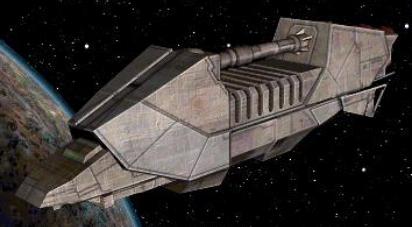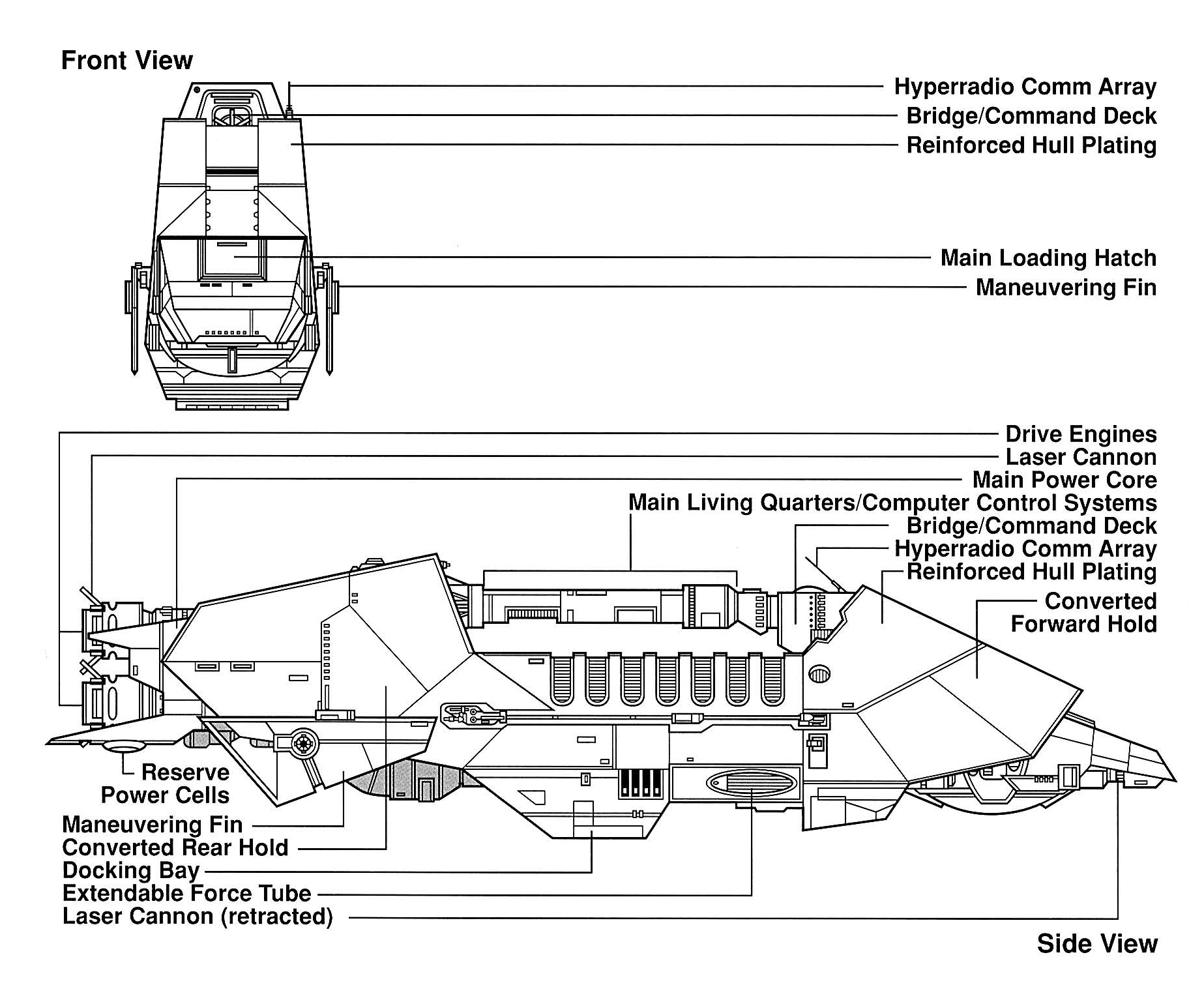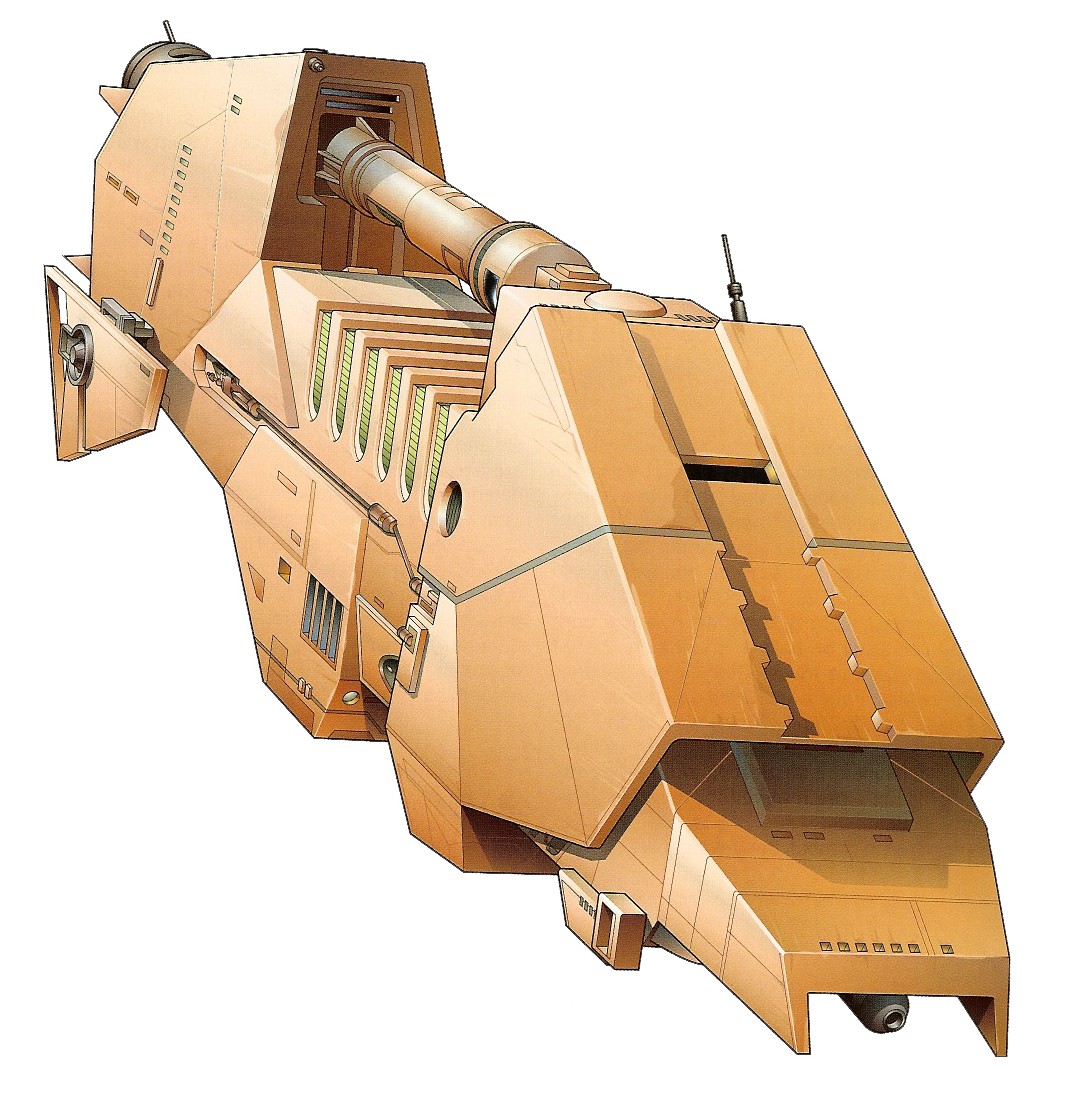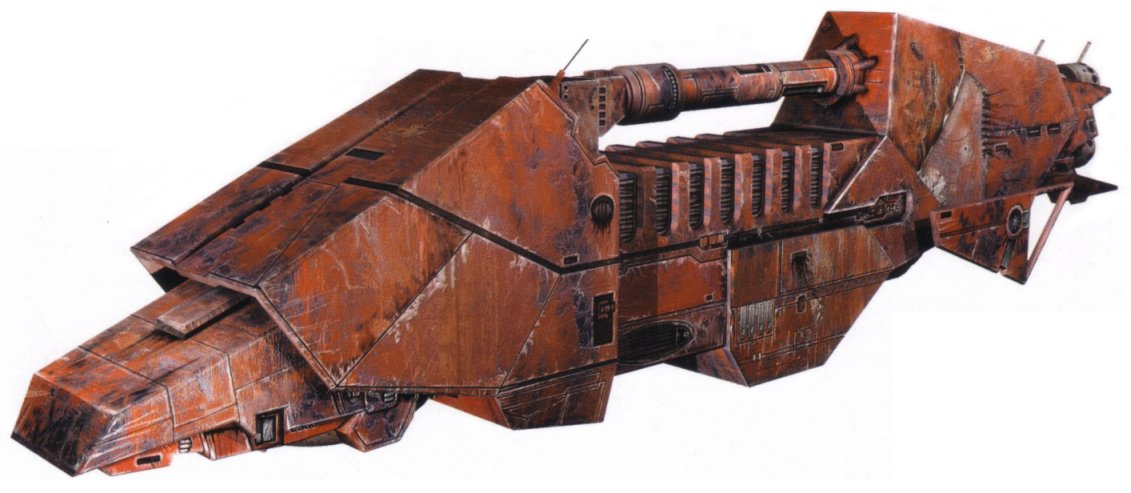Academy-Class Freighter/
ACADEMY-Class Corvette. |
|---|
 | | Production Information: |
|---|
| Manufacturer: | Corellian Engineering Corporation. |
|---|
| Product Line: | Action series. |
|---|
| Model: | Action VI transport. |
|---|
| Class: | Bulk freighter. |
|---|
| Usage: |
|---|
| Role: | Freighter. |
|---|
| Era: | Rise of the Empire era;Rebellion era;New Republic era;New Jedi Order era. |
|---|
| Affiliations: | Galactic Empire;Alliance to Restore the Republic;New Republic;Smugglers' Alliance;Galactic Federation of Free Alliances. |
|---|
| Hyperdrive Rating: | Class 1.0; Backup Class 10. |
|---|
| Shielding: | Warship-grade shielding with independent power. |
|---|
| Hull: | Reinforced with concealed armor. |
|---|
| Sensor Systems: | Warship-grade sensors. |
|---|
| Countermeasures: | Sensor mask. |
|---|
| Armament: | Retractable turbolaser turrets (3). |
|---|
| Complement: | Repulsorlift vehicle (1);Starfighter or shuttle (1) (optional, in cargo space). |
|---|
| Crew: | 10. |
|---|
| Minimum Crew: | 2. |
|---|
| Cargo Capacity: | 90,000 metric tons. |
|---|
| Consumables: | 6 months. |
|---|
| Other Systems: | Hypercomm array;HoloNet transceiver;Medical equipment;Vornskr kennel. |
|---|
 |  | | Academy-Class Frighter/ACADEMY-Class Corvette schematics. | The Wild Karrde. |
|---|
 |
Overview
The "Action VI Transport," sometimes referred to as the bulk transport and the modified action transport, was a popular freighter built by Corellian Engineering Corporation., based on a corvette of several generations prior. As a result, they were easily adapted to light militry duties. During the Forgotten War, at least 1 million of these ships were purpose built as corvettes, and tens of millions of freighters adapted to this duty, as was clearly exemplified by the devastation in the Redou (or Redho) System, where even 100 years later full clean up had not been achieved (though the Spacy and Patrol had cleared a safe navigation corridor, thus reopening the Geh 'Dai "homeworld" of Tython and both ending the Geh 'Dai Civil Wars and renewing the Order's sense of purpose).
Characteristics
Action VI transports typically operated in convoys or in well patrolled areas of space, since they lacked even the most basic forms of self-defensive measures, such as armor and weaponry, making them prime targets for pirates, and as such had to rely on protection from other capital ships. The only reason they were used by the Galactic Empire was because they were quite inexpensive (relative to Imperial wealth).
HistoryAround 10 milion years ago Corellian Engineering developed this spaceframe based on a simple concept, to build the most enfficient design possible. A box form was quickly determeied to be the form that could be built most effiecently, with the ship broken up into three main sections; Powerplant and drive (engineering), crew, and cargo. The cargo section had to be as modular as possible, to allow to the widest possible options.Over the centuries this basic and reliable frame proved highly effective in a great many roles, leading to extensive sales, licenecing to other firms for construction, and illegal manufacture by many firms. Hulls were used in extensively duties; 75% were used as cargo ships but around 10% were used by various militries as frigates while around the same numbers were used by pirates and around 5% used in other duties (passenger ships and smugglers, though many more options existed over time).
Pirates often modified Action VI ships into "interceptor frigates" capable of combating starfighters and corvettes. The most famous Action VI was Wild Karrde, the personal starship owned by smuggler Talon KARRDE. Another notable Action VI was Antan AZZAMEE'S personal starship, Big Score. He often used this ship for either transportation or his covert base of operations.
An Action VI class bulk freighter fresh off the CEC's assembly lines would be a ponderous and ungainly space transport that lacked armaments of any kind and could hold immense amounts of raw materials in their vast holds. However, in the era just after the Forggoten War few owners would allow their ships to get underway for the first time under their own flag without upgrades to their defensive options, with medium energy weapons and heavy shielding being the most common choices. Upgrades to powerplants and drive systems are much rarer and more limited in cargo versions, but is the norm in mility and pirate variants. Smugglers usually eschew upgrades to drives systems (since that would expose the ship as being faster than she should be) but almost always upgrade the defensive systems and powerplants. Heavy retractable turbolasers are the most common armaments upgrades, though hidden missile launchers are not uncommon with pirates and smugglers.When the UGC annexed the Rakatan Galaxy, the first things they did were to put an end to the sectarian fighting; The second was to rebuild the galactic economy by underwriting the reconstruction of merchant fleets. The Action IV-Class was one design selected for support, with the UGC buying the blueprints for 5
Main Variants
The Academy-Class was built as the same basic box configuration with a limited modification to include a tube topside lengthwise along the amidship line. The hull plating selected was extremely thin for cost.The first variant was the ACADEMY-Class, built as a corvette primrily to protect freighters from pirates, with the cargo space converted to additional powerplant, drive, and weapons systems.
The cargo compartements can be arragned any way the owner likes; Live space (up to and including passenger space), vacuum space (all air sucked into the rest of the ship until the space might as well be wide up to space), or anything in between. Mounting and tie down brackets can be installed in hours thanks to pre-installed threaded sockets every 10 square feet.
Technical Data
Physical Arrangement
The Academy-Class are divided into three main sections; The forward topside hump is the crew areas, with the berthing, messdeck, sick bay, bridge, ship's offices, etc. The aft fifth of the hull is taken up by propulsion systems, the aft hump houses the powerplant. A dozen feet forward of the Shaft Room (propulsion space) houses the ship's auxillry craft. The rest of the ship is generally given over to cargo.
The ACADEMY-Class corvette converts the aft hump and secondry craft space to expanded the shaft room, then divides the cargo space into expanded powerplants, weapons systems mounts, and secondry craft launch bays.
Propulsion Systems
The Academy-Class uses a Tractioning drive system in-system capable of up to Mach 30 in orbit and hyperspace drive interstellar with an 1.5 rating. The ACADEMY-Class is equipped with a different type of hyperdrive of a rating of 0.2 and sub-light system capable of .2 light speed.
Tactical Systems
Energy Beam Weapons
Every Academy-Class leaves the shipyards with twin laser turrets, one dorsal bow and the other astern aft. In theory this is enough, though most owners upgrade these not long afterwards.
The ACADEMY-Class on the other hand carry one forward and one aft heavy energy battery, dual dorsal turrets, a dorsal turret, and three broadside turrets. In addition to these are over a dozen light anti-fighter/missile energy turret.
Missile Systems
Academy-Class don't carry missile launchers, btu ACADEMY-Class have twin amidship MRM launchers.
Deflector Shields
Academy-Class freighters carry basic shielding (200 MDC), ACADEMY-Class carry much heavier shielding (regenerative 200 MDC per 8 panels).
Tractor Beam
The Academy-Class have minor tractor beams to bring cargo onboard and to tow stricken vsls, but not one that can be effectively used against a resisting target. The ACADEMY-Class have a much more powerful tractor than can pull in something up to 4 times as heavy.
Medical Facilities
Only purpose-converted Academy-Class ships have anything more than a sickbay, rated to little more than a RN or below in capabilities. Purpose-conversions are capable up to 1,000 patients.
Berthing
Standard Crew Berthing: Standard crew berthing is two sets of triple racks in one compartment set in banks facing one another. At the head of the set is a pair of lockers facing one anotehr, at the feet is a pair of lockers set side by side. Senior enlisted crew consists of two sets of double racks, with one locker (typically on the right) moved to the other side and the open space replaced with a desk.
Officer Berthing: Most officer berthing are arramnged like senior enlisted berthing. The executive officer bething is a single rack, twin lockers where the heads would be, and the opposite side replaced with a desk.
The Cabin: The Cabin is arranged at two sets of berthing spaces; In the first is a space arranged like the XO's berthing without the desk, the second is arranged strictly with the desk. Both lead to a large messdeck/conference area. This is the captian's personal space, and entry is restricted accordingly under normal circumstances.
Secondry Craft
The Academy-Class typically carry up to 3 shuttles; The militry variant typically carries 1 shuttle and up to 5 fighters. |